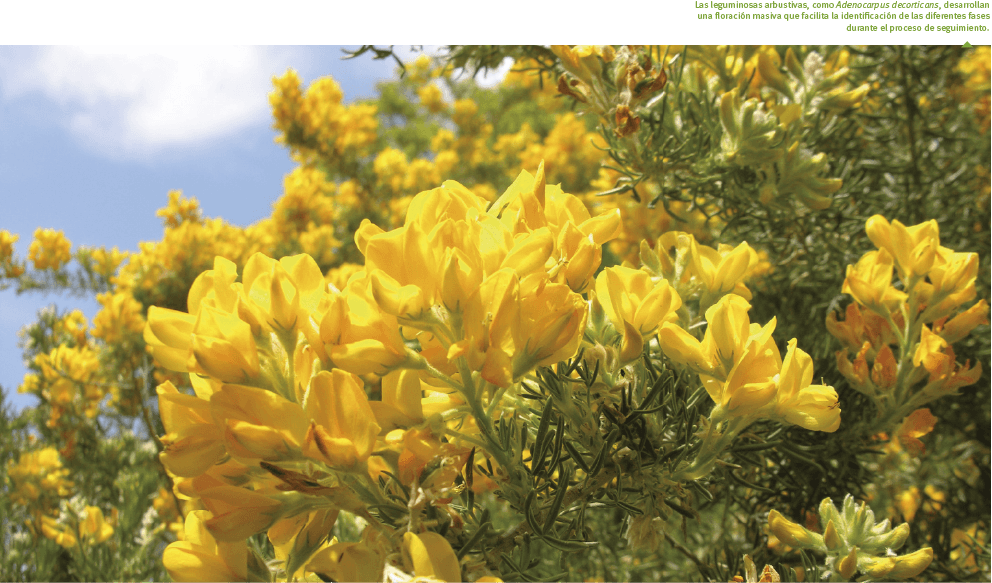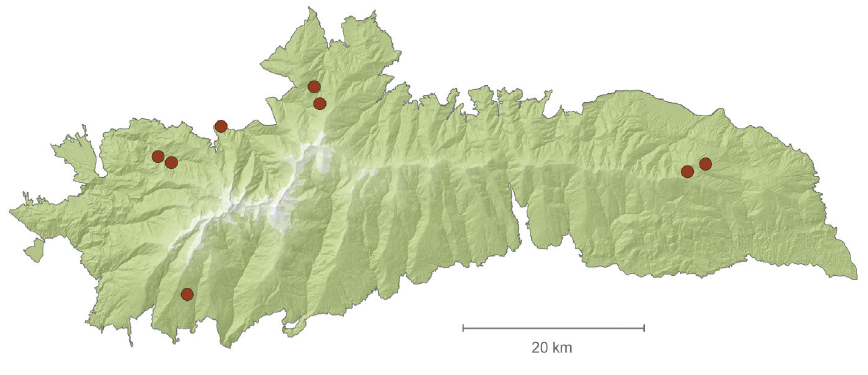Aims
The objective is to monitor phenological changes in a group of plant species along an altitudinal gradient.

Method and effort
The time course of flowering is being monitored in Anthyllis cytisoides, Retama sphaerocarpa, Prunus dulcis, P. avium, Crataegus monogyna, Adenocarpus decorticans, Genista versicolor, and Cytisus galianoi. A site is selected where each species is frequent in the landscape and is present over an altitudinal gradient enough (more than 100 m is recommended) to permit detectable differences with the methodology applied. Two different points per elevation are identified and, at each point, 20 reproductive specimens are selected. In each monitoring event, the phenological phase of the plant is registered according to the following scale:
- Phase 0: flower structures are developing but anthesis has not yet begun.
- Phase 1: between 1 and 5 flowers are open in the specimen.
- Phase 2: more than 5 flowers are open but without having reached peak flowering.
- Phase 3: peak flowering is reached.
- Phase 4: fruits appear.
- Phase 5: only fruit and dry flowers appear.
For the specific case of the Pyrenean oak (Quercus pyrenaica), three different locations were selected on the three main slopes of Sierra Nevada (south, north-east, and north). At each site, two pairs of plots were laid out at two different elevations. In each plot, 10 specimens were identified. In each, the development of the male and female reproductive structures were monitored. Special attention was placed on the development of the female flowers and fruits.

Periodicity
This monitoring was undertaken annually during the flowering period of each species.
References
Menzel, A., Sparks, T.H., Estrella, N., Koch, E., Aasa, A., Ahas, R., Alm-Kübler, K., Bissolli, P., Braslavská, O., Briede, A., Chmielewski, F.M., Crepinsek, Z., Curnel, Y., Åslög, D., Defila, C., Donnelly, A., Filella, Y., Jatczak, K., Måge., F., Mestre, A., Nordli, Ø., Peñuelas, J., Pirinen, P., Remišová, V., Scheifinger, H., Striz, M., Susnik, A., Van Vliet, A.J.H., Wielgolaski, F.E., Zach, S. y Zust, A. 2006. European phenological response to climate change matches the warming pattern. Glob. Change Biol., 12: 1969-1976.
Springer, C.J. y Ward, J.K. 2007. Flowering time and elevated atmospheric CO2. New Phytol., 12: 1969-1976.
Meier, U. (ed.). 2001. Estadios de las plantas mono y dicotiledoneas. BBCH Monografía. 2ª Edicion. Centro Federal de Investigaciones Biológicas para Agricultura y Silvicultura. Alemania. 149 pp.